Audible Therapies offers both therapeutic storytelling for small groups and therapeutic music in one-on-one settings. The storytelling presents monthly, themed programs, featuring live music, parables, metaphors and inspired narratives from real people. Each program has a special message with reinforcing music choices chosen and orchestrated especially for residents of long term care facilities. These colorful stories and songs from yesterday and today provide fun, inspiration, nuance, memories and entertainment presented in a comfortable group setting.
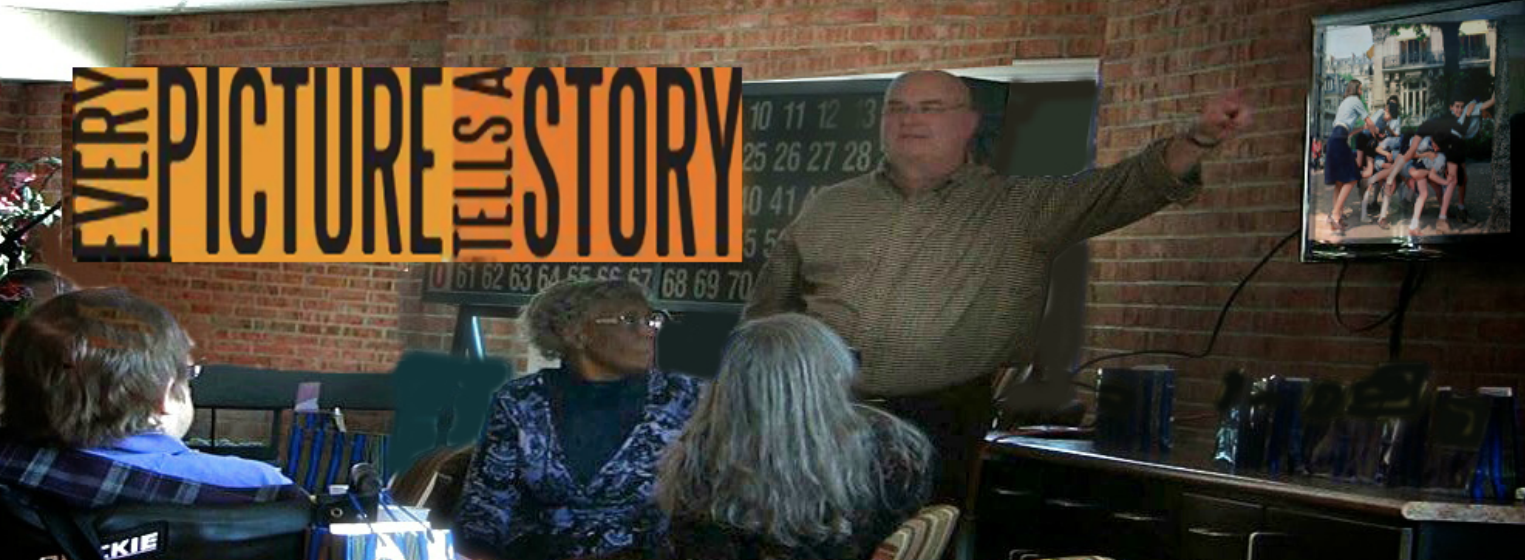
After working with guided imagery and reminiscence therapy in his monthly storytelling, James created an interactive imagery program "Every Picture Tells a Story" (EPTAS) which caters to all cognition levels of residents. Developed specifically for people with all levels of dementia, EPTAS proves residents in memory loss facilities can create, imagine and have fun.
For older people, even with dementia, a 'reminiscence bump' of memories usually remain vivid (until their illness is very advanced), and can often be recalled quite easily with the use of simple triggers. After retiring from work as a geriatric therapist, Karen Gears Siegfried donated her collection of imagery and James combined those images with music and more reminiscence scripts creating “Snapshots, Memories & Music” a lively discussion and music session, often accompanied with coffee and snacks to make the presentations feel like looking at old picture books and sharing memories with friends.
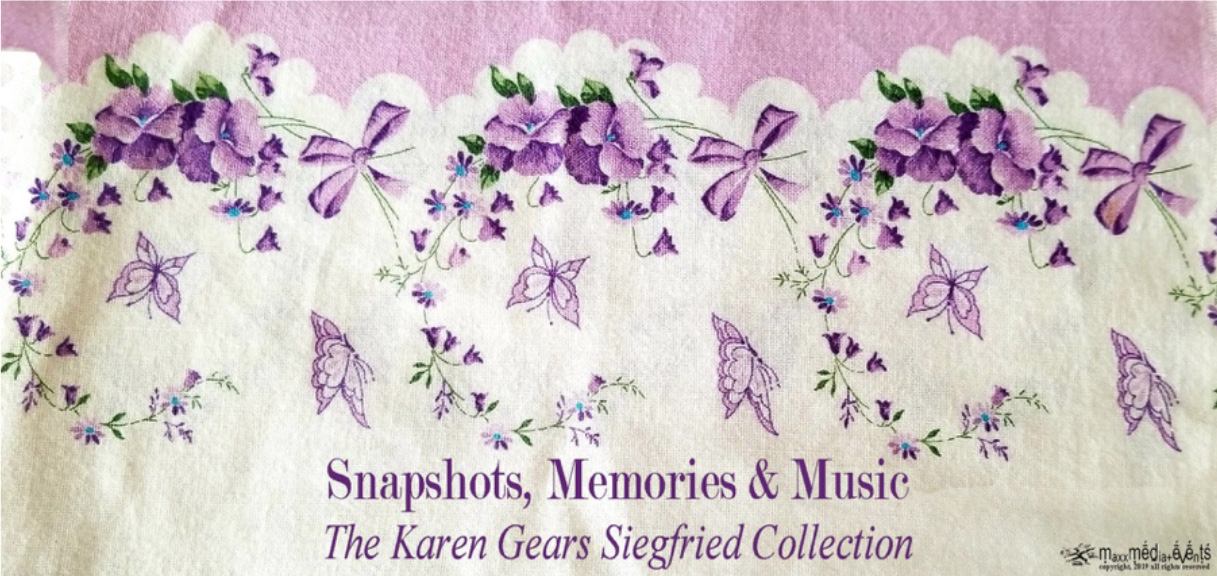



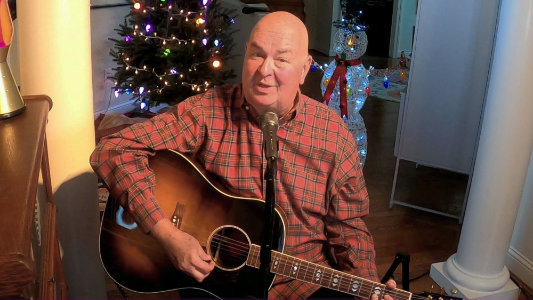

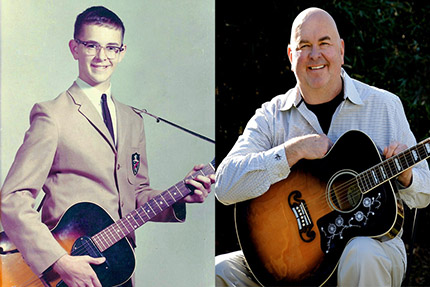
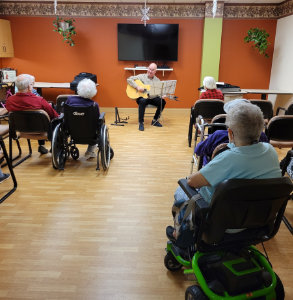
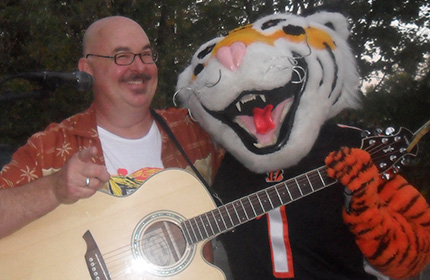
Stories and songs have entertained and evoked responses from audiences since the beginning of time. Humans' right brains are wired to receive and respond to both language and music. These days, attention spans are shorter and more demanding, more sophisticated, and yet less able to independently imagine or visualize. As we age the left side of the brain – its logical watchdog – tends to dominate our behavior and reasoning powers. This is especially true for residents of long term care facilities, who without regular speech, physical or other therapies can become rigid, removed and often fall victim to self-despair. They require even more visual and aural stimulation. Music provides "memory triggers" and when combined with the use of stories, metaphors, fables, and myths, these techniques give the listener the chance to distance themselves from his or her own real life encounters, reframe and offer fresh perspectives on familiar human problems. Put another way, the use of Therapeutic Storytelling and Music become the keys to unlocking a storehouse of ideas, affective emotions and memories, made accessible by engaging the power of the right brain.



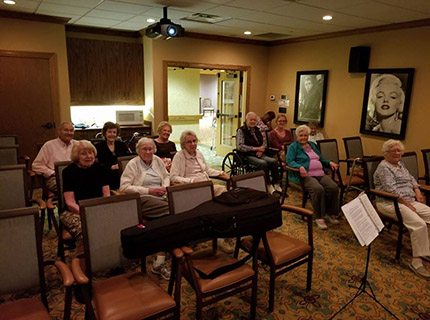
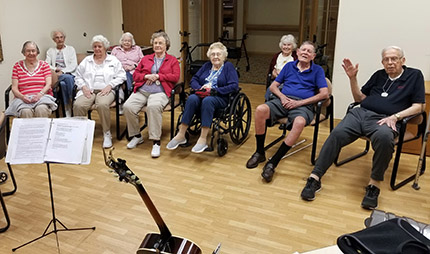
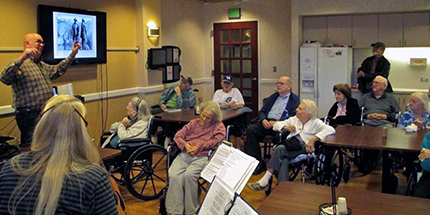
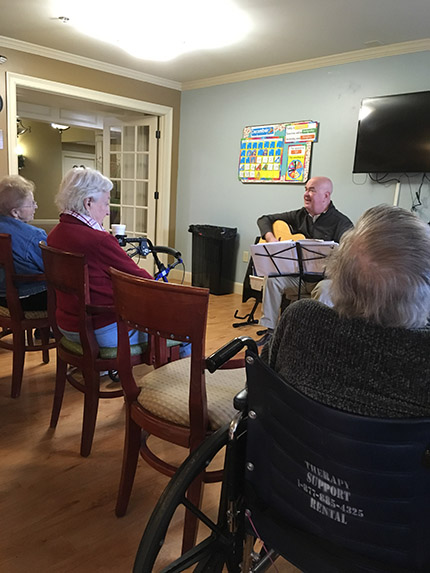
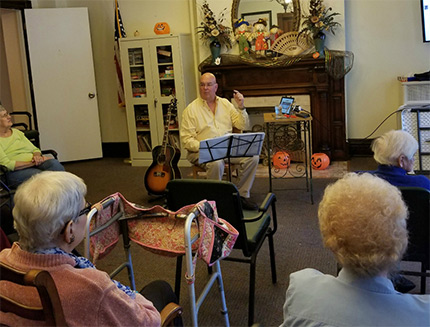
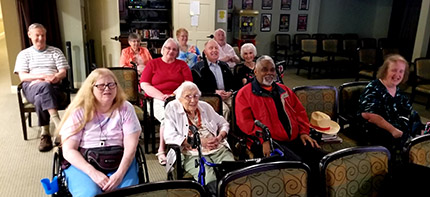
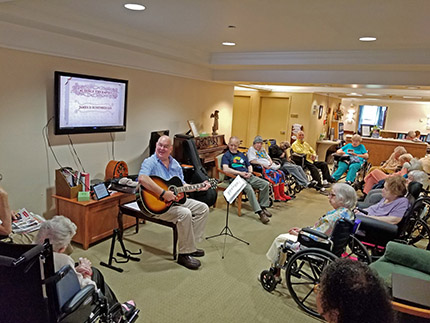
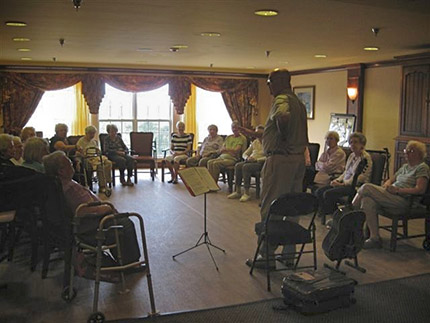
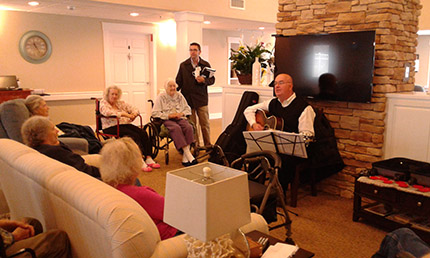
Clinical or therapeutic music provides one-on-one music to the ill and the dying in hospitals, hospices, homes, and other clinical settings. The therapeutic musician focuses on one patient at a time; this results in meeting the patient’s needs in the moment—thus, creating a nurturing environment that facilitates healing.
Therapeutic music is unobtrusive and soothing, in short, music offered in service. In 2016 the Alois Alzheimer Center commissioned Mr. Rosenberger to play at bedside for its hospice patients and this work continues today benefitting both patients and family members in a variety of settings.

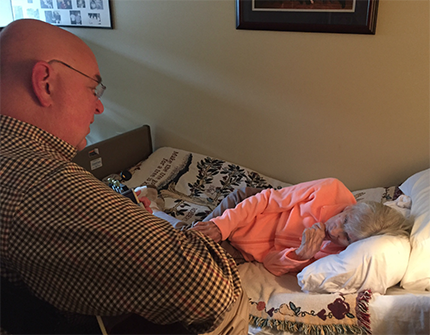
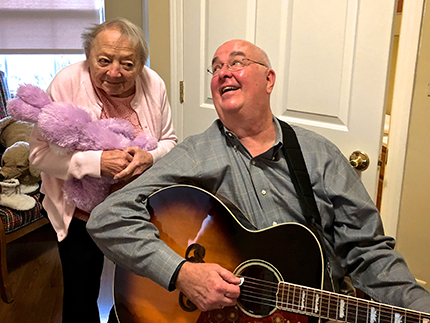

For research abstracts relating to therapeutic music, go to http://www.mhtp.org/what-is-therapeutic-music/.
Here’s a sampling of Activity/Enrichment Directors and audience members' comments:

